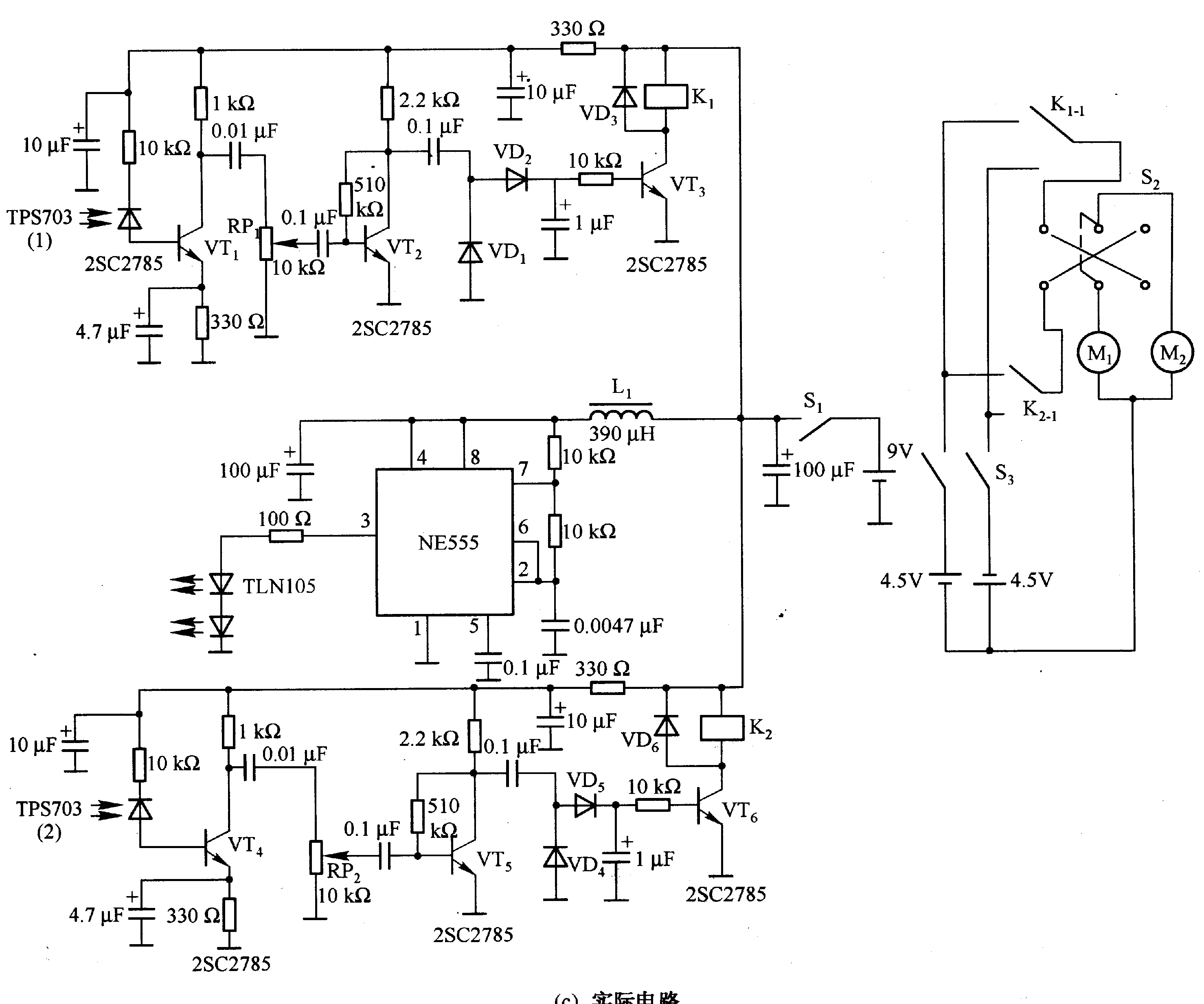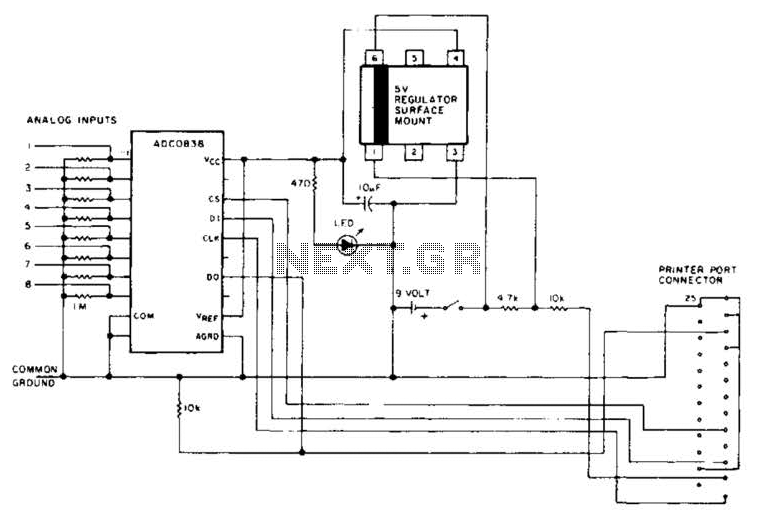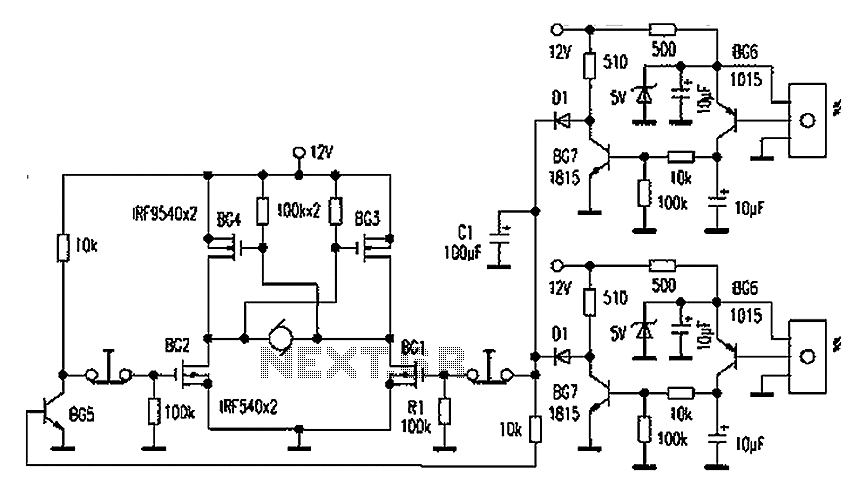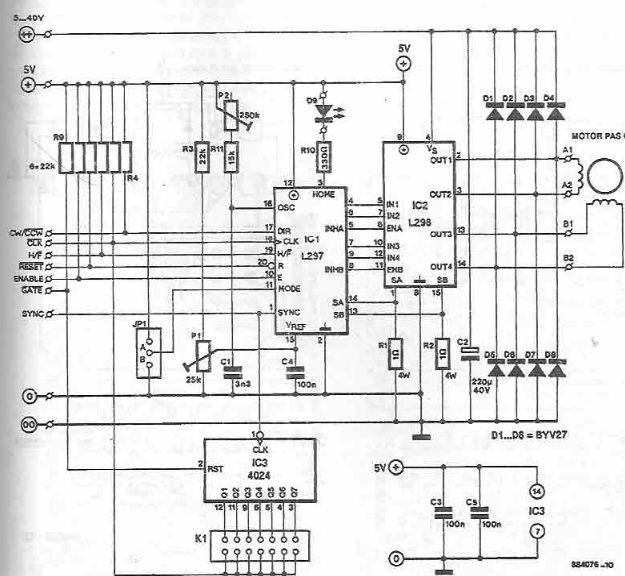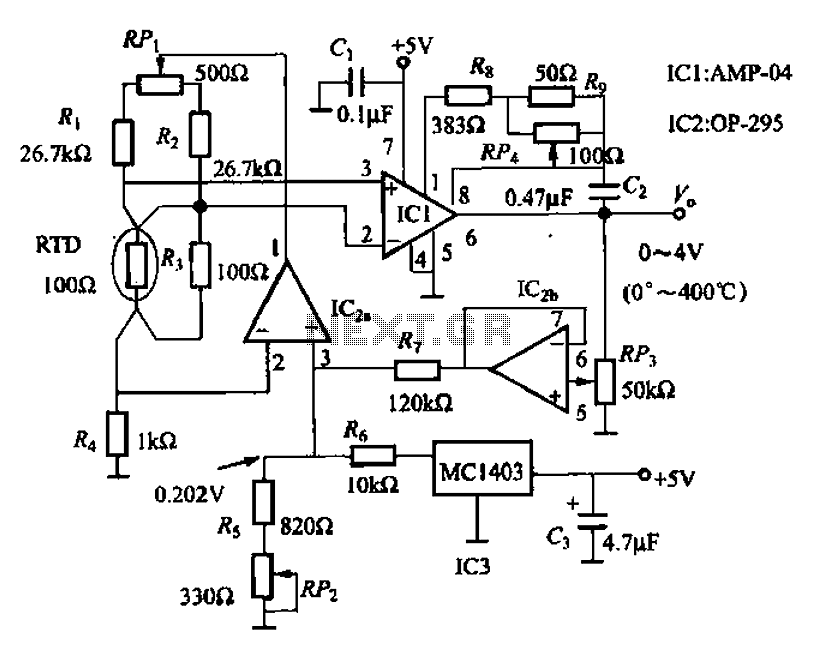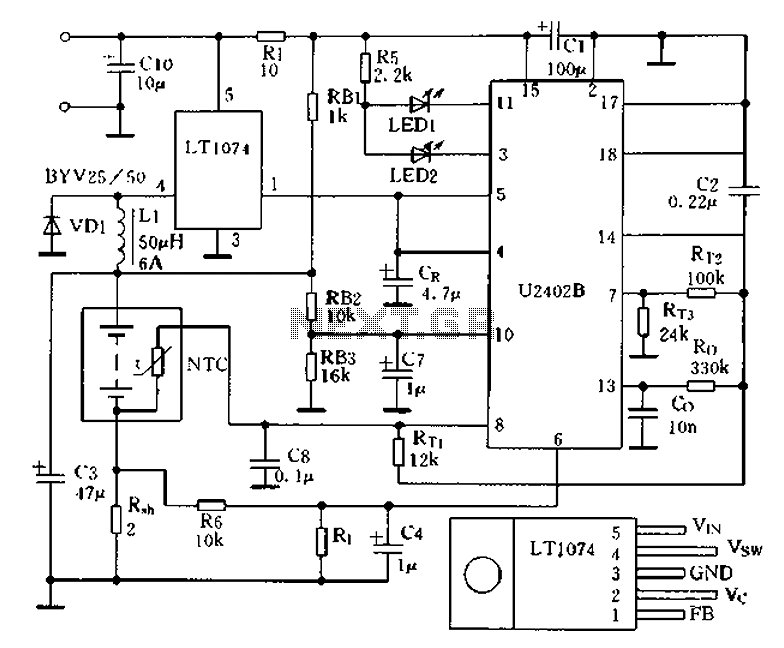
Temperature Controlled Relay Circuit
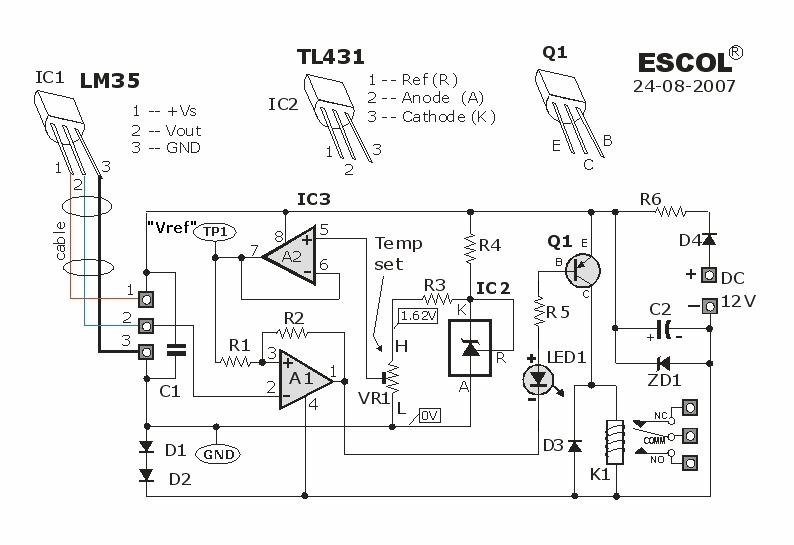
This temperature-controlled relay circuit is a simple yet highly accurate thermal control circuit that can be used in applications where automatic temperature regulation is required.
The temperature-controlled relay circuit operates by monitoring the ambient temperature using a temperature sensor, such as an NTC thermistor or a thermocouple. The sensor provides an analog voltage or resistance change that correlates to the temperature. This signal is fed into a comparator or microcontroller that compares the sensed temperature against a predefined setpoint.
When the sensed temperature exceeds the setpoint, the comparator output changes state, activating a relay. This relay can control larger loads, such as heaters or cooling systems, by switching them on or off based on the temperature readings. The relay's contacts can handle the necessary current and voltage for the application, ensuring safe operation.
The circuit may include additional features such as hysteresis to prevent rapid on-off cycling of the relay, which can prolong the lifespan of the relay and improve system stability. A potentiometer can be used to adjust the setpoint, allowing for flexibility in temperature control.
Furthermore, a LED indicator could be incorporated to visually indicate the status of the relay, providing an intuitive understanding of the circuit's operation. Power supply considerations must also be taken into account, ensuring that the circuit operates within the specified voltage range for all components involved.
In summary, this temperature-controlled relay circuit is a versatile solution for applications requiring precise thermal management, offering reliable performance and ease of integration into various systems.This temperature controlled relay circuit is a simple yet highly accurate thermal control circuit which can be used in applications where automatic tempera.. 🔗 External reference
The temperature-controlled relay circuit operates by monitoring the ambient temperature using a temperature sensor, such as an NTC thermistor or a thermocouple. The sensor provides an analog voltage or resistance change that correlates to the temperature. This signal is fed into a comparator or microcontroller that compares the sensed temperature against a predefined setpoint.
When the sensed temperature exceeds the setpoint, the comparator output changes state, activating a relay. This relay can control larger loads, such as heaters or cooling systems, by switching them on or off based on the temperature readings. The relay's contacts can handle the necessary current and voltage for the application, ensuring safe operation.
The circuit may include additional features such as hysteresis to prevent rapid on-off cycling of the relay, which can prolong the lifespan of the relay and improve system stability. A potentiometer can be used to adjust the setpoint, allowing for flexibility in temperature control.
Furthermore, a LED indicator could be incorporated to visually indicate the status of the relay, providing an intuitive understanding of the circuit's operation. Power supply considerations must also be taken into account, ensuring that the circuit operates within the specified voltage range for all components involved.
In summary, this temperature-controlled relay circuit is a versatile solution for applications requiring precise thermal management, offering reliable performance and ease of integration into various systems.This temperature controlled relay circuit is a simple yet highly accurate thermal control circuit which can be used in applications where automatic tempera.. 🔗 External reference
